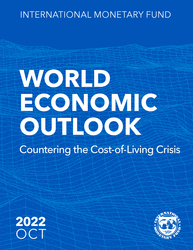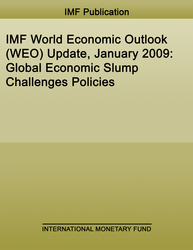
World Economic Outlook, October 2022: Countering the Cost-of-Living Crisis
| Arabic | |||
| Chinese | |||
| English | |||
| French | |||
| Japanese | |||
| Russian | |||
| Spanish |
Inflation , Labor , Economics- Macroeconomics , Taxation - General , International - Economics , Public Policy- Environmental Policy , growth , growth outlook , global recession , adverse scenario , output gap , output losses , COVID-19 , pandemic , scarring , inflation , core inflation , inflation expectations , monetary policy , financial conditions , debt distress , sovereign spreads , fiscal policy , disinflation , food and energy prices , Russian gas supplies , pandemic , war in Ukraine , current account , dollar strength , capital flows , China real estate sector , fragmentation , multilateral cooperation , climate change , climate policies , Wages , wage dynamics , wage-price spirals , inflation , labor markets , expectations , monetary policy , interest rates , nominal wages , real wages , unemployment , tightness , supply-demand imbalances , COVID-19 , pandemic , recovery , de-anchoring , Phillips curve , pass-through , demand shocks , supply shocks , supply-chain shocks , sectoral shocks , monetary policy shocks , cost-push shocks , expectations formation , rational expectations , adaptive expectations , adaptive learning , historical episodes , advanced economies , emerging market economies , climate policy , monetary policy , inflation , energy transition , carbon pricing , macroeconomic model , GMMET , output-inflation tradeoff , GHG taxes , green subsidies , green investment , inflation expectation , price inflation , wage-price spiral , wage growth , headline inflation , Carbon tax , Greenhouse gas emissions , Global , Europe , Caribbean , Middle East and Central Asia , Africa



